#south african frog
Photo

796 notes
·
View notes
Text
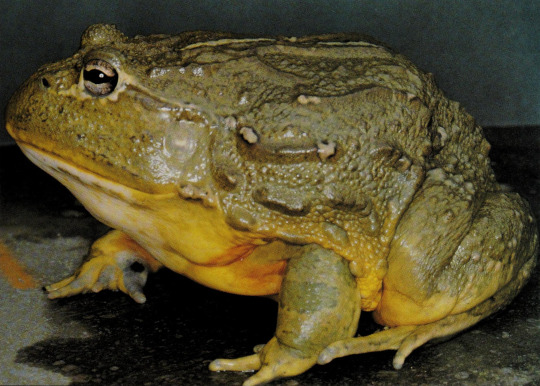
South African bullfrog
By: Marc Staniszewski
From: A Practical Guide to Exotic Pets
1994
#south african bullfrog#wide-mouthed frog#frog#amphibian#1994#1990s#Marc Staniszewski#A Practical Guide to Exotic Pets
37 notes
·
View notes
Note
I read somewhere that rain frogs are mostly muscle, is this true? Extremely curious about their anatomy so I'm wondering if you have any insight as to why/how they are so round!
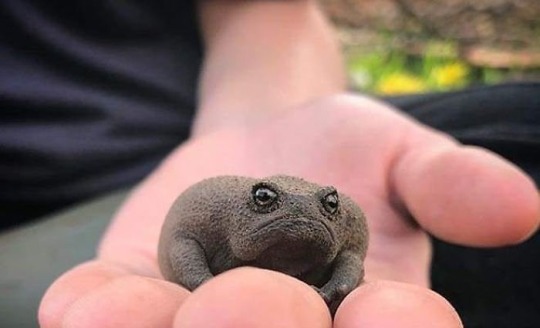
Black Rain Frog (Breviceps fuscus), family Brevicipitidae, endemic to South Africa
photograph by Brittany Raine | Nature ~ Adventure ~ Photography | (@brittle_sees)
~~~~~~~~~~~~~~~~~~~~~~~~~~~~~~~~~~~~~~~~~~~~~~~
Yes, you are correct, Rain Frogs are actually not altogether that fat... they're just shaped like that. They actually do have quite a lot of muscle mass for their size.
Having a round, compact body seems to allow for better, more efficient, burrowing.
You see, that "fat", round body again and again in different groups of burrowing frogs, like many of the Microhylidae and the Spadefoots. This group of frogs does seem to be the ultimate in roundness though!
For a more technical explanation of how they're structured, check out Mark Scherz's recent post about the subject...
The Travelling Taxonomist - Why are rain frogs so round? What's /inside/ of... (tumblr.com)
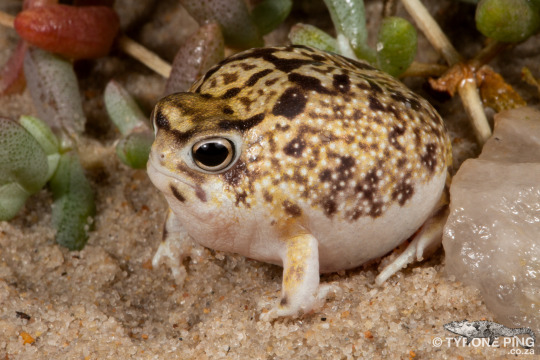
Desert Rain Frog (Breviceps macrops), family Brevicipitidae, South Africa
A few herpetologists are now including rain frogs (and their close relatives) in the family Hemisotidae, as the subfamily Brevicipitinae. I am not, though the 2 families are now considered to be very closely related.
photograph by Tyrone Ping
Tyrone Ping - Exploring Southern African Herpetofauna
935 notes
·
View notes
Text
Giant Bullfrog, Safari2go
A variety of frogs and toads gather to make use of it meet and breed. At night we are sometimes swooned to the pleasant calls of many species such as the Bubbling Kassinas, Red Toads, Plain Grass Frogs and Cacos. The little lily pond within the Main Lodge additionally attracts the gorgeous shy white ghost-like Foam Nest Frog, inconspicuously tucked on a rock. This little pan is a vital water supply for the world of the Reserve by which it's positioned.
african bullfrog price
The giant bullfrog is listed as a near-threatened species, and the survey hopes to find out the amphibian's distribution and numbers in South Africa. Bullfrogs are more and more being threatened by improvement, as their properties in grasslands and wetlands are favoured constructing websites. A wholesome African bullfrog will have the standard olive green pores and skin with none irregular bumps or lesions, as properly as clear eyes. Males develop to be much bigger than females, so should you prefer a smaller frog, you would possibly want to choose a feminine. But do not anticipate a petite, docile pet; the females are simply as voracious and sensitive to being dealt with because the males.
We analyzed 385 anuran species exhibiting aquatic , arboreal , terrestrail hidden , and terrestrail exposed clutches. For Hylidae, we analyzed 221 species with aquatic , arboreal and hidden clutches. Mean SSD did not differ among species with totally different oviposition websites; generally, males had been ca. 20% smaller than females, what could probably be associated to cloacal juxtaposition and fertilization success. Nonetheless, in species with hidden clutches, men and women tended to have similar body sizes, what might be defined by restrictions to female measurement enhance because of area limitation to amplectant pairs.
They are very intriguing amphibians and spend most of their 20 yr lifespan burrowed underground. Unlike most amphibians they only come out after heavy rainfall. Pixie Frogs have become popular with hobbyists who want an aquatic and straightforward to look after pet that's extra thrilling than a goldfish. African bullfrog on show in Mystic Aquarium, Mystic, Connecticut, United States.African bullfrog on display in Mystic Aquarium, Mystic, Connecticut, United States. You may even occupy your self at house by drawing one on our African bullfrog coloring pages.
They have a definite tympanic fold that wraps across the tympanum . Adult males usually have brilliant yellow chins during the breeding season and their tympanum is twice as massive as the attention. Their name is a deep resonating "jug-o-rum" that carries nicely.
#giant bullfrogs#south african giant bullfrog attacks lion#south african giant bullfrog#african bullfrog price#giant bull frogs#giant bull frog
1 note
·
View note
Text
Professor Louis du Preez from the North-West University (NWU) in South Africa and his team of researchers have discovered a new species of African bullfrog called Pyxicephalus beytelli.
This is only the fourth species of bullfrog ever identified in southern Africa.
The species occurs in parts of north-eastern Namibia, southern Angola, south-western Zambia and north-western Botswana, and is named after the late Ben Beytell, former director of Parks and Wildlife Management in Namibia. Beytell was instrumental in the proclamation of the Khaudum National Park in Namibia, where the species occurs.
The new species is similar to all other species of bullfrogs in its external structure, internal anatomy and general behaviour. However, the main distinguishing features of Pyxicephalus beytelli are its bright yellow and lime green colouring, blue spots and a white vertebral line running down its body. Then there are its prominent and somewhat ferocious teeth, which are sloped backwards (recurved), and two large bony protrusions on the lower jaw.
“Their teeth really stand out, and we are excited to learn more about their feeding habits. I can promise you that this frog has a big bite,” says Du Preez.
26/03/2024
New frog just dropped
138 notes
·
View notes
Text

Frog that is almost too goofy looking to be real- the common platanna, also known as the African clawed frog. This one was found in South Africa
#common platanna#african clawed frog#frog blog#frog blogging#frog#frogs#frogposting#amphibian#amphibians#frogblr#herpetology#herping#herp
460 notes
·
View notes
Text
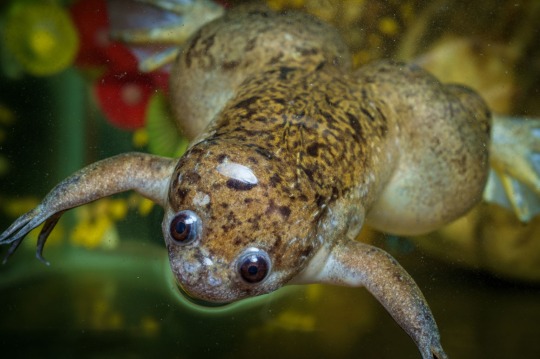
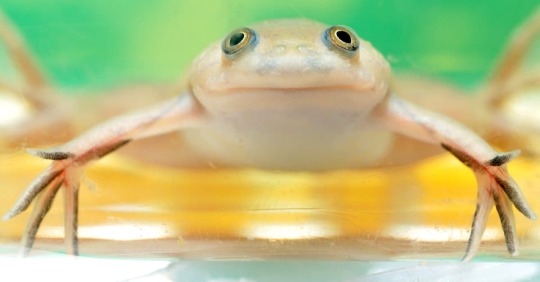
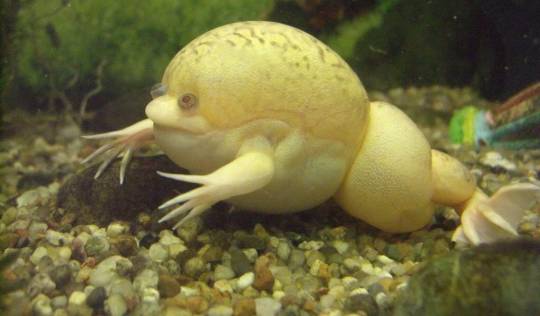
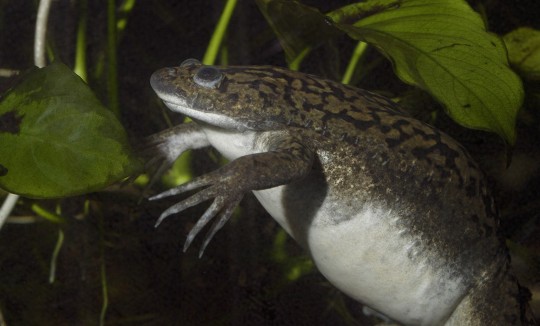
African Clawed Frog (Xenopus Laevis)
Honestly I could've written pages about these guys, there's so many cool facts about them. Very clumsy on land, and so these lads tend to stick to water or - if dried up - can bury themselves in the mud for up to a year! Their skin produces a type of antibiotic that heals their wounds rapidly. They lack tongues, and so have to push food into their mouths with their tiny unwebbed hands. The males also lack vocal cords, and so have to click to attract females - they rarely respond, but their rejection is a slow ticking sound...which seems more like a warning imo. These guys are an invasive species in many habitats, but endemic along the African Rift Valley south of the Sahara Desert, as well as South Africa, Namibia, and Angola. They're also a species of least concern!
90 notes
·
View notes
Text
I’m just about done with finals, so I decided to gather up a quick list of over 50+ different POC women characters with actual good stories and character development as well as what they’re in, since you guys seem to be complacent in accepting mediocrity🥰
I know there are A LOT more REALLY GOOD characters out there, like Firebird from Marvel for example, but these are all characters from media that I either have personally consumed or know a lot about that I can think about off the top of my head. So if anyone wants to keep the list going in the comments, please feel free to add on
Charlotte- Queen Charlotte: A Bridgerton Story
Shuri- Black Panther (MY LOVE😭❤️)
Okoye- Black Panther
Nakia- Black Panther
Queen Ramonda- Black Panther
Katara- ATLA
Korra- LoK
Toph- ATLA
Azula- ATLA
Beauregard- Critical Role: Campaign 2
Fy’ra Rai- Critical Role: Exandria Unlimited
Opal- Critical Role: Exandria Unlimited
Deni$e- Critical Role: Campaign 3
Deanna- Critical Role: Campaign 3
Lady Kima: Critical Role: Campaign 1/ Legends of Vox Machina
Laerryn: Critical Role: Exandria Unlimited: Calamity
Veth Brenatto- Critical Role: Campaign 2
Mirko- My Hero Academia
Ahsoka (people refer to her as a POC character even though she’s a Togruta)
Moana
Mulan
Tiana- Princess and the Frog
Esmeralda- The Hunchback of Notre Dame
Nani- Lilo and Stitch
Raya- Raya and the Last Dragon
Mel- Arcane
Ambessa Medara- Arcane
Sevika- Arcane
(Special shout out to Ekko from Arcane because he’s SUCH A GOOD CHARACTER)
Storm- Marvel comics
Wonder Woman- DC comics (she is Mediterranean, which is located in the North Africa/ Europe/ West Asia region, for the incels who are going to try to fight me on that. Just because your skin has less melanin than people “think you should have” does not invalidate you being a POC)
Nubia- DC comics
Special shoutout to General Nanisca in The Woman King. I have not watched it yet, but I’ve heard a lot of great things
Valkyrie- Thor Ragnarok
Gamora: Guardians of the Galaxy (though, she’s not human, she’s a Zen-Whoberis, but her actress is Dominican and Puerto Rican)
Ava Silva- Warrior Nun
Sister Beatrice- Warrior Nun
Sister Lilith- Warrior Nun
Deyha- Genshin Impact
Candace- Genshin Impact
Xinyan- Genshin Impact
Janai- The Dragon Prince
Ursula- Once Upon A Time
Mulan- Once Upon a Time
Lucyna “Lucy” Kushinada- Cyberpunk: Edgerunners
Mermista- She-Ra and the Princesses of Power
Catra- She-Ra and the Princesses of Power
Lonnie- She-Ra and the Princesses of Power
Netossa- She-Ra and the Princesses of Power
Entrapta- She-Ra and the Princesses of Power
Perfuma- She-Ra and the Princesses of Power
Mara- She-Ra and the Princesses of Power
Frosta- She-Ra and the Princesses of Power
(All of whom are Etherian’s, not Terran’s, which would equivalate people from earth)
Mazikeen- Lucifer
Wednesday Addams- The Addam’s Family/ Wednesday
Calliope “Cal” Burns- First Kill
Talia Burns- First Kill
Yennefer- The Witcher (actress is of Indian descent.)
Triss- The Witcher (some debate can be had about this due to her character in the games being white and her actress in the show having South African heritage. I enjoy them both equally)
I would add Pocahontas to this list, but the Disney recreation of her story is an extremely incorrect and awful retelling, so I implore you to go and look up the story of Amonute/ Matoaka, which is the true name of Pocahontas. It’s not an easy story to hear, but I feel as though people need to know her true story instead of Disney’s romanticized one.
Also, if you guys REALLY want a good female POC pirate story, check out the story of the most successful pirate in the world named Ching Shih, aka Cheng I Sao. She was a woman born in Guangdong, China in the late 18th century and worked as a prostitute until she caught the eye of Cheng I, the notorious Commander of the Red Flag Fleet. After buying and marrying her, he noticed her intelligence, leadership skills, and determination, so he began to teach her about life in the high seas. She quickly adapted and helped him lead his fleet, and when he died she assumed full control over his fleet and amassed 1,800 ships and 80,000 pirates under her control and became the most feared pirate leader of her time. It’s a VERY cool story
#notice how they’re all GOOD COMPLEX CHARACTERS#and how Phee is not😮#you all need to raise your standards#phee is a bad character#and surface level at best#criticizing a character who just so happens to be poc for their bad writing is not racist#but criticizing a character BECAUSE they’re poc is a completely different story#want to talk about a strong black woman#here you go#I really do love shuri#I adore her#she’s so cool#and so smart#and she’s such a badass#and she’s so pretty😭#anyone on this list could demolish Phee#tech and phee#tech x phee#the bad batch phee#tbb phee#phee genoa#star wars#the bad batch#tbb#bad batch#your idiotic comments fuel me
35 notes
·
View notes
Text
Have you seen this childhood show: Gullah Gullah Island (1994-1998), United States (English)

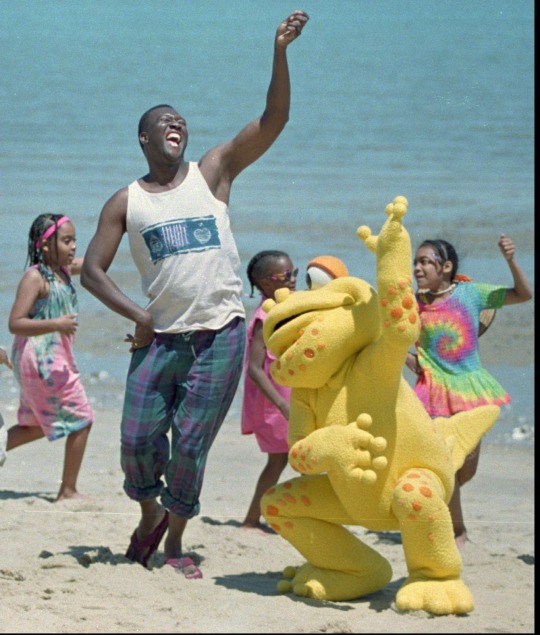

Commentary/Context/Memories: I actually saw the cast in concert, but my hyperactive self could not sit still, so I didn’t pay much attention. I feel so bad about it 😭
[Mod A: Awww please don’t feel bad about that! You were (likely) just a kid expressing your excitement in the way you knew best (unless you didn’t really want to go to the show). Concerts can be really hard to sit through as a kid regardless of if you’re interested in them or not! I also regret not really paying much attention to the Jonas Brothers (my first concert in 2008) bc I was not obsessed/had a crush on them the way my friend who took me had (should’ve been a sign I was gay in hindsight haha), even though I now think they had some great bops! Anyways back to the show: love the vibes of this show! I am normally creeped out by mascot costumes, but their friend Binyah Binyah Poliwog seems like a friendly lil frog! This show was a music-based show that aimed to educate kids about Gullah culture, who are an African American cultural community based along the coastline of North/South Carolina, Florida, Georgia and the Sea Islands that has a specific language and prominent arts/music culture because of relative isolation/shared African cultural heritage, the language is also known as Geechee (related to Creole). The show shared songs, art styles, dance, and stories important to the Gullah culture! I would like to learn more about this, because while I did know about Creole, I don’t know much about Gullah culture (so very glad to learn through researching this show!)]
72 notes
·
View notes
Text
I would like to offer this resource for therians, an extensive list of all of Sir David Attenborough’s nature documentaries that are available on soap2day, and a full list of what species* they each (notably, prominently) feature the natural behaviors of, separated by episode, and omitting species that were only shown dead, juvenile or being predated on. This took me a while (I have been working on it since Prehistoric Planet’s release) because I did in fact have to watch every single series in full in order to list all the species and the episodes are around 50 minutes long, but enjoy.
Long post ahead:
Most of these shows have closed captioning, which is why I’ve picked soap2day. Planet Earth is the only one that doesn’t. I did not include Dynasties and Dynasties II because each episode only features one species.
Thank you to Birch (@ambiguousmutt) for his help (he watched about half of the episodes) so I didn’t have to do it individually. Credit goes to him as well.
*Sometimes Attenborough doesn’t say the specific species and I was too busy trying to get through the episodes to identify it. In those cases I just put the most specific name I could.
Planet Earth
Episode one (From Pole to Pole): emperor penguin, polar bear, caribou, arctic grey wolf, Amur leopard, six-plumed bird-of-paradise, superb bird-of-paradise, great white shark, African elephant, African buffalo, lechwe, baboon, African wild dog
Episode two (Mountains): gelada, walia ibex, Ethiopian wolf, guanaco, cougar, grizzly bear, markhor, snow leopard, golden eagle, grey wolf, panda, golden snub-nosed monkey, red panda, demoiselle crane
Episode three (Fresh Water): giant salamander, grizzly bear, smooth-coated otter, Nile crocodile, dolphin fish, midge, Amazon river dolphin, dorado, piranha, spectacled caiman, crab-eating macaque, snow goose
Episode four (Caves): wrinkle-lipped free-tailed bat, cockroach, bat hawk, cave swiftlet, yellow-red rat snake, Texas blind salamander
Episode five (Deserts): Bactrian camel, dromedary camel, red kangaroo, fennec fox, guanaco, long-nosed bat, Nubian ibex, flat lizard, lion, African elephant, locust
Episode six (Ice Worlds): snow petrel, Antarctic petrel, south polar skua, humpback whale, emperor penguin, eider, muskox, arctic grey wolf, polar bear, little auk, arctic fox
Episode seven (Great Plains): Mongolian gazelle, red-billed quelea, wildebeest, snow goose, arctic fox, arctic grey wolf, bison, wild ass, Tibetan fox, pygmy hog, African elephant, lion, baboon
Episode eight (Jungles): magnificent bird-of-paradise, spider monkey, howler monkey, siamang gibbon, gliding tree frog, colugo, red crab spider, African elephant, chimpanzee
Episode nine (The Shallow Seas): humpback whale, multiple corals, banded sea krait, trevally, dugong, bottlenose dolphin, Socotra cormorant, salp, comb jelly, sea lion, dusky dolphin, sea urchin, sunflower starfish, short-tailed stingray, great white shark, king penguin, fur seal
Episode ten (Seasonal Forests): Eurasian lynx, moose, crossbill, wolverine, western capercaillie, pine marten, great grey owl, pudu, kodkod, mandarin duck, cicada, red deer, Amur leopard, tiger, mouse lemur
Episode eleven (Ocean Deep): whale shark, oceanic whitetip shark, common dolphin, Cory's shearwater, manta ray, sea spider, vampire squid, spider crab, unnamed deep sea eel, giant isopod, chambered nautilus, Pacific spotted dolphin, mola mola, frigatebird, sailfish, blue whale
Planet Earth II
Episode one (Islands): pygmy three-toed sloth, Komodo dragon, sifaka, marine iguana, Galapagos racer, Buller's albatross, fairy tern, Christmas Island red crab, yellow crazy ant, chinstrap penguin
Episode two (Mountains): Nubian ibex, red fox, golden eagle, grizzly bear, bobcat, flamingo, mountain viscacha rat, snow leopard
Episode three (Jungles): spider monkey, flying lizard, sword-billed hummingbird, river dolphin, jaguar, glass frog, paper wasp, click beetle, red bird of paradise, Wilson's bird of paradise, indri
Episode four (Deserts): lion, Harris's hawk, shrike, locust, sand grouse, pale chanting goshawk, feral mustang, golden mole, desert long-eared bat, darkling beetle, Namaqua chameleon
Episode five (Grasslands): saiga antelope, lion, harvest mouse, carmine bee-eater, Kori bustard, African elephant, serval, Jackson's widowbird, grasscutter ant, compass termite, giant anteater, bison, red fox, arctic grey wolf
Episode six (Cities): langur, peregrine falcon, leopard, European starling, great bowerbird, raccoon, rhesus macaque, spotted hyena, wels catfish
Our Planet
Episode one (One Planet): lesser flamingo, orchid bee, golden-collared manakin, red-capped manakin, blue manakin, cormorant, booby, common dolphin, shearwater, African wild dog, timber wolf
Episode two (Frozen Worlds): gentoo penguin, wandering albatross, narwhal, Pacific walrus, humpback whale, orca, leopard seal, polar bear
Episode three (Jungles): lowland gorilla, forest elephant, black sicklebill, twelve-wired bird-of-paradise, western parotia, mountain treeshrew, Philippine eagle, black spider monkey, leafcutter ant, Sumatra orangutan, velvet worm
Episode four (Coastal Seas): northern fur seal, compass jellyfish, giant trevally, mobula ray, Atlantic stingray, bottlenose dolphin, grey reef shark, whitetip reef shark, sea otter, California sheephead wrasse, Steller's sea lion, bald eagle, humpback whale, Guanay cormorant, Inca tern, Peruvian booby, South American sea lion
Episode five (From Deserts to Grasslands): Socotran cormorant, Arabian leopard, Arabian oryx, African elephant, cheetah, bison, Alcon blue butterfly, saiga, Przewalski's wild horse, tiger
Episode six (The High Seas): blue whale, spinner dolphin, mobula ray, oarfish, anglerfish, bristle worm, giant petrel, black-browed albatross, wandering albatross, bluefin tuna, sea lion, humpback whale
Episode seven (Fresh Water): Australian pelican, torrent duck, grizzly bear, manatee, giant mayfly, common kingfisher, osprey, jaguar, callipterus cichlid, Siamese fighting fish, hippopotamus, lion, African elephant, sandhill crane
Episode eight (Forests): Siberian tiger, bald eagle, rough-skinned newt, great hornbill, African elephant, African wild dog, fossa, gray mouse lemur
A Perfect Planet
Episode one (Volcano): lesser flamingo, marabou stork, Galápagos land iguana, vampire ground finch, Aldabra giant tortoise, North American river otter, coyote, Kamchatka brown bear, wildebeest
Episode two (The Sun): yellow-cheeked gibbon, fig wasp, arctic grey wolf, wood frog, garter snake, arctic fox, Saharan silver ant, golden snub-nosed monkey, sooty shearwater, humpback whales
Episode three (Weather): straw-colored fruit bat, fire ant, Amazonian giant river turtle, desert rain frog, Bactrian camel, Christmas Island red crab, carmine bee-eater, Nile crocodile, African fish eagle, hippopotamus
Episode four (Oceans): common dolphin, marine iguana, flightless cormorant, flamboyant cuttlefish, eider, bottlenose dolphin, lemon shark, manta ray, blacktip reef shark, trevally, rockhopper pengin, Eden's whale
Episode five (Humans): none
Life
Episode one (Challenges of Life): bottlenose dolphins, cheetah, panther chameleon, orca, brown-tufted capuchin, stalk-eyed fly, hippopotamus, Clark's grebe, giant Pacific octopus, strawberry poison-dart frog, leopard seal, orangutan
Episode two (Reptiles and Amphibians): pebble toad, caiman, basilisk, Brazilian pygmy gecko, panther chameleon, Namaqua chameleon, red-sided garter snake, collared iguana, hog-nosed snake, horned lizard, sea krait, African bullfrog, Komodo dragon
Episode three (Mammals): Weddell seal, elephant shrew, aye-aye, caribou, straw-colored fruit bat, lion, spotted hyena, polar bear, brown-nosed coati, meerkat, African elephant, humpback whale
Episode four (Fish): sailfish, flying fish, weedy sea dragon, convict fish, sarcastic fringehead, mudskipper, Hawaiian freshwater goby, hippopotamus, barbel, silvertip shark, clownfish, sea lion, ragged tooth shark, multiple snapper, whale shark
Episode five (Birds): spatuletail hummingbird, lammergeier, red-billed tropicbird, magnificent frigatebird, red knot, horseshoe crab, lesser flamingo, chinstrap penguin, great white pelican, Clark’s grebe, sage grouse, Vogelkop bowerbird
Episode six (Insects): Darwin’s beetle, unnamed damselfly, monarch butterfly, alkali fly, Wilson’s phalarope, oogpister beetle, mongoose, bombardier beetle, honey bee, black bear, Japanese red bug, Dawson’s bee, grass cutter ant
Episode seven (Hunters and Hunted): ibex, short-tailed stoat, brown bear, Ethiopian wolf, California ground squirrel, star-nosed mole, cheetah, red fox, greater bulldog bat, bottlenose dolphin, Bengal tiger, rattlesnake, orca
Episode eight (Creatures of the Deep): Pompeii worm, Humboldt squid, nemertean worm, moon jelly, fried egg jellyfish, spider crab, stingray, cuttlefish, giant Pacific octopus, sunflower sea star, king crab, cleaner shrimp
Episode nine (Plants): monarch butterfly, purple-throated carib hummingbird
Episode ten (Primates): Hamadryas baboon, Japanese macaque, lowland gorilla, spectral tarsier, phayre's leaf monkey, ring-tailed lemur, Sumatra orangutan, chacma baboon, white-faced capuchin, brown-tufted capuchin, western chimpanzee
Blue Planet II
Episode one (One Ocean): bottlenose dolphin, tuskfish, tern, giant trevally, mobula ray, false killer whale, Asian sheepshead wrasse, orca, humpback whale, walrus
Episode two (The Deep): sea toad, Venus’ flower basket, unnamed shrimp, ethereal snailfish, cock-eyed squid, pyrosome, barrel-eyed fish, unnamed siphonophore, yeti crab, Humboldt squid, fangtooth fish, sixgill shark, scabbardfish, zombie worm
Episode three (Coral Reefs): broadclub cuttlefish, coral grouper, day octopus, multiple corals, green turtle, bottlenose dolphin, manta ray, bobbit worm, saddleback clownfish, marbled grouper, grey reef shark
Episode four (Big Blue): spinner dolphin, yellowfin tuna, mobula ray, sailfish, sperm whale, sea turtle, blue shark, great white shark, multiple jellyfish, Portuguese man o' war, whale shark, wandering albatross, shortfin pilot whale
Episode five (Green Seas): Garibaldi, Australian giant cuttlefish, weedy seadragon, common octopus, pyjama shark, sea otter, tiger shark, smooth stingray, zebra mantis shrimp, common dolphin, humpback whale
Episode six (Coasts): Pacific leaping blenny, king penguin, southern elephant seal, Sally Lightfoot crab, Galápagos sea lion, ochre starfish, clingfish, chain moray eel, Atlantic puffin, arctic skua
Episode seven (Our Blue Planet): none
Prehistoric Planet
Episode one (Coasts): Tyrannosaurus rex, Tethydraco, Phosphatodraco, Tuarangisaurus, Mosasaurus hoffmannii, pycnodont fish, ammonites, Kaikaifilu
Episode two (Deserts): Dreadnoughtus, Tarbosaurus, Velociraptor, Mononykus, Barbaridactylus, Secernosaurus
Episode three (Freshwater): Velociraptor, Tyrannosaurus rex, Deinocheirus, Quetzalcoatlus, Masiakasaurus, Beelzebufo, elasmosaur
Episode four (Ice Worlds): dromaeosaur, hadrosaur, Ornithomimus, Olorotitan, troodontid, Antarctopelta, Pachyrhinosaurus, Nanuqsaurus
Episode five (Forests): Austroposeidon, Triceratops, Carnotaurus, Qianzhousaurus, Edmontosaurus, Atrociraptor, Anodontosaurus, Therizinosaurus, Telmatosaurus, Hatzegopteryx
The Hunt
Episode one (The Hardest Challenge): African leopard, African wild dog, Parson’s chameleon, nose-horned chameleon, African mantis, Darwin’s bark spider, Nile crocodile, Amur falcon, orca, cheetah
Episode two (Arctic): polar bear, arctic grey wolf, arctic fox, glaucous gull
Episode three (Forests): tiger, American marten, sparrow hawk, Portia spider, tarsier, harpy eagle, chimpanzee, army ant
Episode four (Oceans): blue whale, frigatebird, dorado, sargassum fish, spinner dolphin, Beroe ovata, Chiroteuthis, lionfish, black-browed albatross, sea lion, tuna, copper shark, common dolphin, Bryde's whale
Episode five (Plains): cheetah, caracal, honey badger, termite, bald eagle, lion, Ethiopian wolf, hotrod ant, spoor spider
Episode six (Coasts): bottlenose dolphin, algae octopus, sand bubbler crab, long-tailed macaque, marine otter, grizzly bear, grey wolf, peregrine falcon, orca, humpback whale
Episode seven (Conservation): none
Life In Colour
Episode one (Seeing In Color): Indian peafowl, mandrill, Costa’s hummingbird, magnificent bird-of-paradise, blue moon butterfly, fiddler crab, mantis shrimp, flamingo, poison dart frog
Episode two (Hiding In Color): Bengal tiger, langur, ptarmigan, crab spider, zebra, Cuban painted snail, blue-striped fangblenny, common waxbill, pin-tailed wydah, Augrabies flat lizard
Frozen Planet II
Episode one (Frozen Worlds): emperor penguin, orca, Pallas’s cat, Siberian tiger, grizzly bear, hooded seal, polar bear
Episode two (Frozen Ocean): polar bear, beluga, harp seal, skeleton shrimp, crested auklet, orca
Episode three (Frozen Peaks): high-casqued chameleon, japanese macaque, kea, andean flamingo, giant panda, golden eagle, andean mountain lion
Episode four (Frozen South): king penguin, Antipodean wandering albatross, blue whale, Weddell seal, chinstrap penguin, snow petrel, leopard seal, orca
Episode five (Frozen Lands): grey wolf, arctic fox, Amur leopard, Siberian tiger, painted turtl, Lapland bumblebee, snowy owl, caribou, grizzly bear
Episode six (Our Frozen Planet): none
Africa
Episode one (Kalahari): fork-tailed drongo, ostrich, black rhinoceros, Angolan giraffe, African leopard, armored ground cricket, spider wasp
Episode two (Savannah): Agama lizard, shoebill, bee-eaters and rollers, lesser flamingo, African elephant, crowned eagle, African fish eagle, martial eagle
Episode three (Congo): chimpanzee, central African rock python, Angola banana frog, African skimmer, rockfowl, African elephant
Episode four (Cape): emperor swallowtail, giant kingfish, African penguin, monkey beetle, springbok, yellow-billed kite, pied crow, ghost crab, vundu catfish, Nile crocodile, Bryde’s whale, great white shark, common dolphin
Episode five (Sahara): Grevy’s zebra, naked mole rat, barn swallow, Dromedary camel, dung beetle, crocodile, western yellow wagtail, Saharan silver ant
Episode six (The Future): none
521 notes
·
View notes
Text
Jakapil vs Spicomellus
Jakapil kaniukura
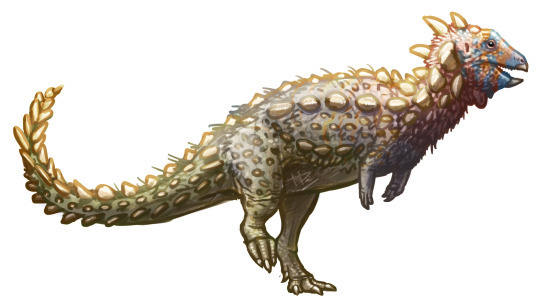
Artwork by @i-draws-dinosaurs, written by @zygodactylus
Name Meaning: Deep Jawed Shield Bearer
Time: 99 to 97 million years ago (Cenomanian stage of the Late Cretaceous)
Location: Candeleros Formation, Neuquen and Mendoza, Argentina
Jakapil is to nonavian dinosaurs as Annakacygna is to birds. This may seem extreme - what could possibly top the cup zoomy swan of filter feeding death - but Jakapil is a weird little dude. It was a bipedal armored dinosaur, similar to the Early Jurassic basal form Scutellosaurus - except, you’ll note, it lived a hundred million years later. At about 1.5 meters long, it was a small dinosaur, again similar to its relative from so long ago. It had rows of osteoderms on its body, and a predentary - unlike other early thyreophorans. It may have diverged from the main thyreophoran group in the Sinemurian, representing a lost lineage of bipedal armored forms that persisted (presumably in South America). However, its classification is a major debate among researchers - many features of the jaw are more similar to Ceratopsians than to Thyreophorans, indicating it may be an armored variant of an early Ceratopsian (which, would be, to say the least, wild) or a completely new clade of Ornithischian altogether! The large amount of wear on its teeth indicates it chewed its food, rather than sheering or chopping it - something only found in a few Ornithischian groups. It lived in a large desert environment, peppered with oases, and filled with a variety of other animals - fish, frogs, tuatara, snakes, turtles, mammals, and other dinosaurs like Andesaurus, Ekrixinatosaurus, Giganotosaurus, Buitreraptor, Alnashetri, and Bicentenaria.
Spicomellus afer
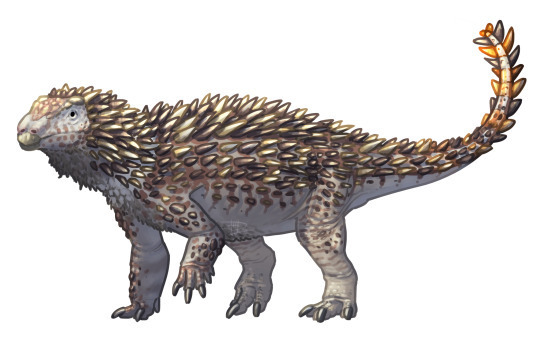
Artwork by @i-draws-dinosaurs, written by @zygodactylus
Name Meaning: African Collar of Spikes
Time: 168 to 164 million years ago (Bathonian to Callovian stages of the Middle Jurassic)
Location: Third Subunit, El Mers Group, Fès-Meknès, Morocco
Spicomellus is the oldest known Ankylosaur, and also the first described Ankylosaur from North Africa! But that isn’t even the weirdest thing about it! Spicomellus had dermal spikes, fused to the bone, forming a collar (for which it was named) around its neck. Given that the spike were fused to the underlying bone - something no other ankylosaur does - it is probable that it wouldn’t have had a particularly flexible neck, or an easy time moving in general if the pattern continued throughout the body. It probably would have been around 3 meter long at the most, similar in size to other ankylosaurs from the Middle Jurassic. Coming from the El Mers Group, i tlived alongside Cetiosaurus, the stegosaur Adratiklit, megalosaurs, and teleosaurids. Spicomellus adds to a growing diversity of Jurassic Ankylosaurs, showing how Ankylosaurs and Stegosaurs lived alongside each other for a large period of time (the Middle and Late Jurassic epochs) and that the extinction of the Stegosaurs must have been due to a different, unrelated factor.
#dmm#dmm rising stars#dinosaur march madness#dinosaurs#birds#birblr#palaeoblr#paleontology#march madness#bracket#polls#jakapil#spicomellus#round three
183 notes
·
View notes
Text


Former slave and abolitionist William Wells Brown, wrote in his book, My southern home, or, The South and its people published in 1880, discussed the life of slaves in St. Louis, Missouri. Brown recorded a secret Voudoo ceremony at midnight in the city of St. Louis. Slaves circled around a cauldron, and a Voudoo queen had a magic wand, and snakes, lizards, frogs, and other animal parts were thrown into the cauldron. During the ceremony spirit possession took place. Brown also recorded other conjure (Hoodoo) practices among the enslaved population.
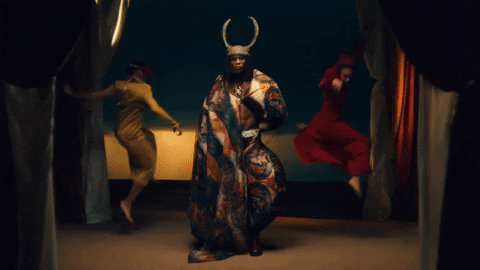
Enslaved Africans in America held on to their African culture. Scholars assert Christianity did not have much of an influence on some of the enslaved Africans as they continued to practice their traditional spiritual practices, and Hoodoo was a form of resistance against slavery whereby enslaved Africans hid their traditions using the Christian religion against their slaveholders. This branch of Christianity among the enslaved was concealed from slaveholders in "invisible churches." Invisible churches were secret churches where enslaved African Americans combined Hoodoo with Christianity. Enslaved and free African ministers preached resistance to slavery and the power of God through praise and worship and Hoodoo rituals will free slaves from bondage.

William Edward Burghardt Du Bois (W. E. B. Du Bois) studied African American churches in the early twentieth century. Du Bois asserts the early years of the African church during slavery on plantations was influenced by Voodooism. African church records in the late nineteenth century into the early twentieth century in the South, recorded a number of church members practiced conjure and combined Christian and African spiritual concepts to harm or heal members in their community.

#african#afrakan#kemetic dreams#africans#afrakans#brown skin#brownskin#african culture#afrakan spirituality#voodoo#african spirituality#web du bois#invisivle churches#hoodoo#rituals#williams well brown
52 notes
·
View notes
Note
Have you heard of the rain frog?
Mais bien sur!
I am assuming that you're referring to the African rain frogs, Breviceps spp., although there are species of frogs in Australia also called rain frogs. I've posted a lot of African rain frogs, check it out…
Herpsandbirds.tumblr.com/tagged/breviceps
Plaintive Rainfrog (Breviceps verrucosus), family Brevicipitidae, Hogsback, Eastern Cape, South Africa
Photograph by Chad Keates

187 notes
·
View notes
Text
The United States (US) leap-frogged competitors in the scramble for African minerals required to power the global energy transition when it signed an agreement with Zambia and the Democratic Republic of Congo in 2022 for the development of a regional value chain in the electric vehicle battery sector.
The agreement challenged the dominance of China, South Africa, Hong Kong, Mauritius and India as the traditional consumers of Zambian copper, gold, lithium, cobalt and manganese exports.
It targeted large volumes of critical transition metals that occur in the Katanga Copperbelt, a mineral-rich strip stretching from Lualaba province in the south-eastern DRC to the Luapula province in northern Zambia.
According to the US state department, the agreement aimed to “facilitate the development of an integrated value chain for the production of electric vehicle batteries in the DRC and Zambia, ranging from raw material extraction, to processing, manufacturing and assembly”.
17/04/2024
127 notes
·
View notes
Text

SOMEBODY ONCE TOLD ME-
I know it’s been a very long while since our last episode, but after dealing with other projects, along with real life getting in the way from time to time, we’re finally continuing our next part of the second road trip across the Maasrichtian. While it only has 5 segments like the last episode, and does borrow some of last season’s “Freshwater” thunder quite a bit, I still had a good time with Swamps. And the segments presented here do bring a few things to the table for PHP in general. You’ll see what I mean when we get into them.
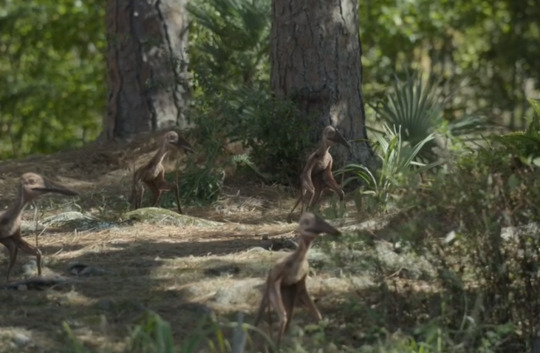
Snacks on the wing
The episode starts with the wetlands of Asia, where baby azhdarchid pterosaurs are attempting to fly for the first time. Keeping up with this show’s record of baby animals meeting their end, the pterosaurs have to deal with the threat of getting eaten by a horde of Shamosuchus. Unlike the Simosuchus from earlier in the season, these relatives to today’s crocodiles and alligators comfort more to the shape that we’re used to seeing these reptiles in. While I don’t have much to say about this segment, I find it cool how it draws comparisons with how Freshwater crocodiles hunt flying foxes in Australia. Even when millions of years apart, some hunting strategies are just that good.

Gone fishin’
The episode then cuts to the forests of South America, where the focus is on a truly unique animal; Austroraptor. For those not aware, this was a species of raptor dinosaur that was not only huge for its family (Think 20 feet long), it also lived a life of hunting fish. These of these guys like what would happen if a grizzly bear and a heron had a baby together. The plot of this segment shows a young male trying to score some lunch of his own. Many of the larger adults can only only catch garfish like it’s not their problem (which is something that our male is new to), but they can be aggressive, often attacking each other if one of them disrupts the other’s hunt. Until he learns how to catch prey successfully, the best option that the main male has to take is to snatch someone else’s prey, and try not to lose at least a few feathers in the process.
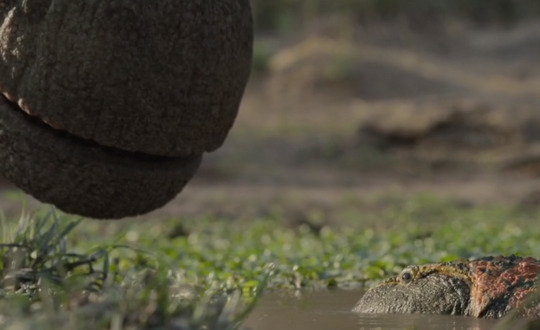
“Hippity hoppity, get off my property”
We then cut back to Madagascar to see the return of another Season 1 veteran. Y’all must’ve loved Beelzebufo so much, you all wanted to see more of the bay dinosaur-eating frog (And I really wouldn’t blame any of y’all). And fortunately, Apple heard everyone’s pleas for the devil toad to return, so here we are! The segment has a male Beelzebufo trying to find a good place to attract a mate. Unfortunately for the frog, a herd of Rapetosaurus just happened to come back and waddle in the mud, making things even harder for the Beelzebufo. That must be frustrating.
The Beelzebufo then has to find a new place to set up his courtship display, away from the titanosaurs. After a bit of hopping around, and even doing this…
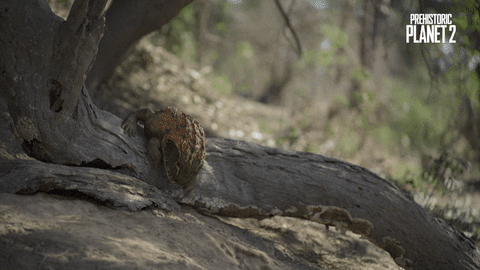
Keep on rollin’
Our champ eventually finds a good enough spot to try again, with the Rapetosaurus herd moving on. They even leave footprints in the mud that get filled with water. The only complaint that I have for this scene is the lack of the Beelzebufo raising his eventual tadpoles. The concept art for the devil toad that was made by Gaëlle Seguillon refers to it as “Beelzebufo adult”, so it could be possible that devil tadpoles were considered to be in the show. Either that, or we could see another Beelzebufo-themed segment in a possible Season 3, taking alot of inspiration from how African bullfrog males raise their young. I may or may not be planning to add that to my hypothetical Season 3 idea, so keep your eyes peeled.

Head Games
Despite the episode literally being called “Swamps”, we cut to a dusty plain in North America, where the area in question used to be a swamp that eventually dried up. It’s here where we see the second pachycephalosaur of the series in the form of Pachycephalosaurus itself. It’s no secret that the domed heads of these creatures were used for some sort of territorial display, so we see an older male fighting a younger and rowdy male, who has been causing trouble for the herd. After a long and hard duel, the old male is knocked down, and his younger rival bellows out in victory. This turns out to be a bad idea, as it gives the old male time to get back up and strike down his rival. With the battle lost, the young male is then exiled from the herd, where he has to fend for himself. I’m not gonna lie, he’s gonna need everything in his kit to survive. Y’know why?
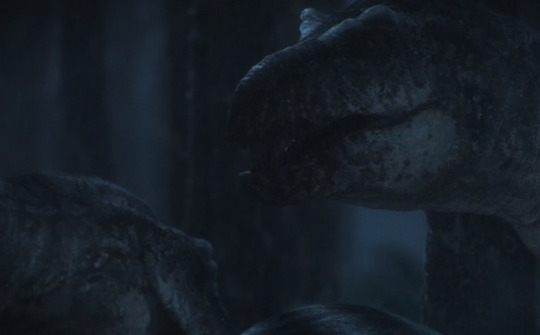
In the night, no one can hear you roar
The last segment of the episode shows us how basically terrifying T. Rex can be when hunting. After the last season shows how these giant predators can be doting parents or a loving couple, this segment serves as a reminder that this is still Tyrannosaurus Rex that we’re talking about. When night falls on the floodplains of Hell Creek, a couple of T. Rex brothers stalk around the forest, spying on a group of Edmontosaurus. The two split up, with one of them stepping on a fallen branch, intentionally causing the herd to get nervous. Thanks to their padded feet muffling any heavy footsteps that could be heard, along with their extremely good night vision, the predators spring into action. While one of them lunges for an Edmontosaurus, the latter is sent towards the other T. Rex. With both of them clamping their bone-crushing jaws into their hapless prey, the hunt is soon over, and the two get to enjoy their hard-earned meal. A funny thing to mention is how neither of the T. Rex crashed into the opening, roaring as they charged towards their prey. Large predators cannot afford to waste precious energy by running out and screaming like a mad man, so they need to be careful, often turning to ambush tactics to catch prey. If anything, this instance of averting usual pop-culture depictions of dinosaurs serves to make these beasts scarier than they already were. Unlike the mindless, perpetually roaring and shrinking movie monster that shakes the ground itself with every step, you’d never see or hear the real thing coming, until it’s too late…
youtube
This takes the phrase “Bonehead” to a new level
The Uncovered segment of the episode takes a closer look at how pachycephalosaurs like Pachycephalosaurus used their domed heads in fighting. I don’t have alot to say about this part, but I can say that headaches must be a major pain when it comes to these guys.
And with that, we only have 2 episodes left. I apologize for pumping this review out late into the month. Being busy with other projects, along with dealing with real life stuff and being a lazy ass from time to time can do that to you. Nonetheless, the next review on our list covers one of my favorite episodes in the entire series so far, so that’ll be fun when we get to it. Get ready to “dive” in again next time, because we’re gonna be soaking up the thirst of the land.
…I hope you laughed at that joke.
13 notes
·
View notes
Text
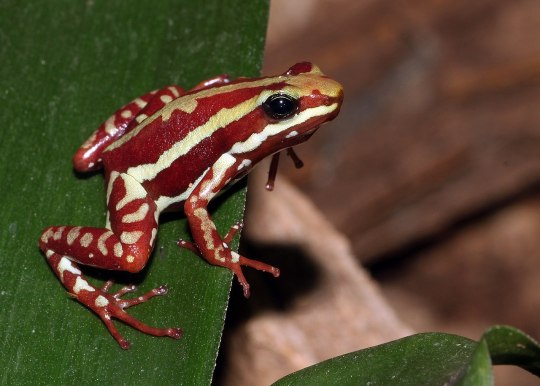
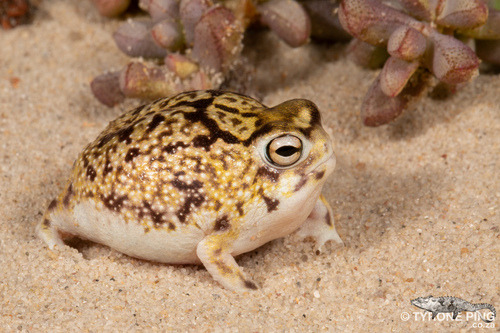
Phantasmal Poison Frog: These frogs are endangered due to their limited range in the high-elevation rainforests of Ecuador. As with many poison dart frogs, the eggs hatch in leaf litter away from the fast-flowing streams where they grow to adulthood, leaving the male to carry them there on his back. Males are also territorial and will fight by wrestling each other to the ground. They used to be considered in medical research, since the toxin they synthesize had the potential to serve as a strong painkiller. However, the risks were deemed too great and research on this has since ceased.
Desert Rain Frog: Extremely adapted to their South African climate, these frogs do not need any water to survive or reproduce! They spend their days burrowed in the moist ground, emerging at night to hunt or breed. When a mating pair finds each other, they go underground where they will lay the clutch of eggs. These eggs hatch directly into froglets, who immediately head off to hunt on their own.
19 notes
·
View notes